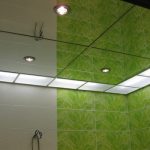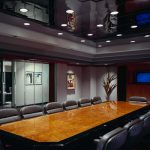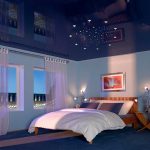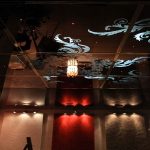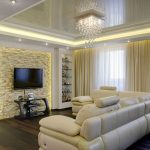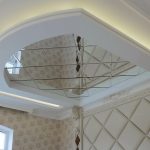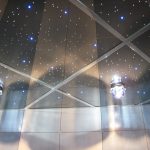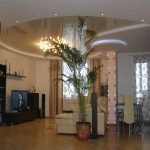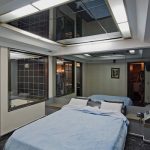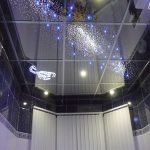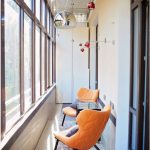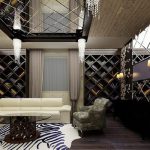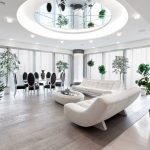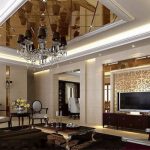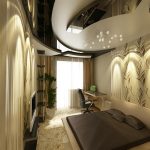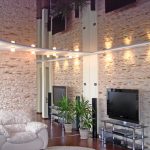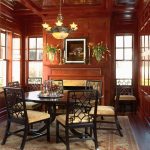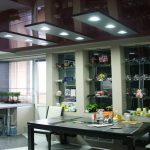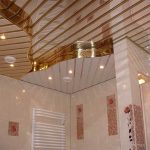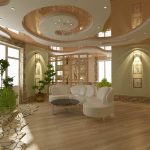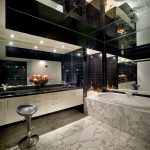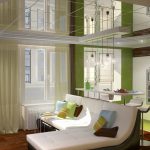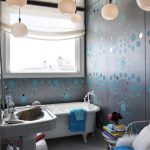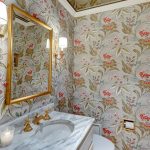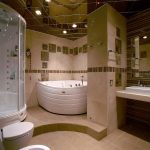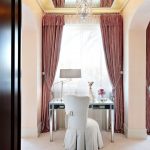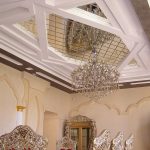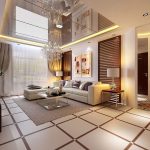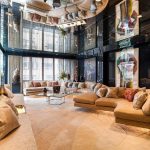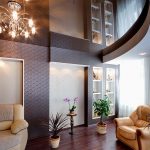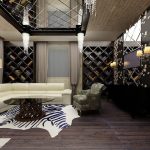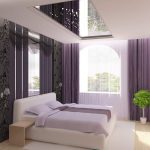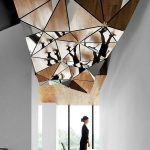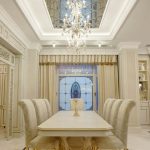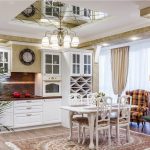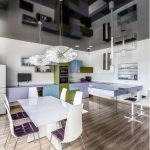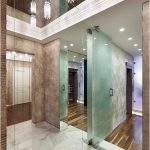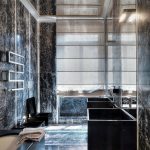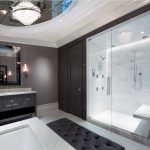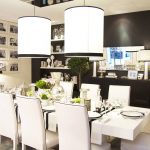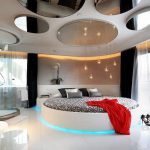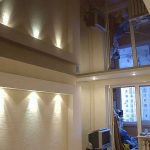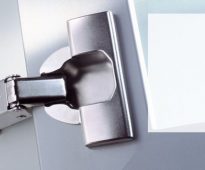 Closers for kitchen cabinets
Closers for kitchen cabinets
Mirror ceiling in the interior
Mirror ceilings are a multifunctional design solution that not only decorates the room, but also allows it to improve its technical characteristics. Such a ceiling covering will hide any shortcomings not only of the ceiling itself, but also of the entire interior as a whole. Due to the fact that the use of mirrors still remains so common in ordinary residential premises, it remains unique in its own way and interesting for designers.
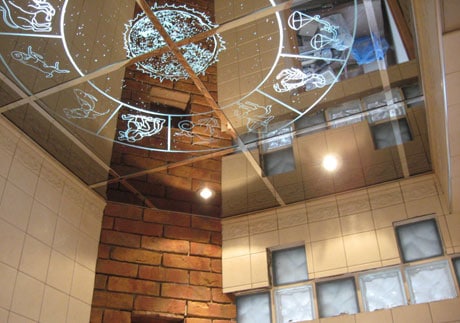
Mirrors with a transparent ornament on the ceiling make the interior more interesting.
Mirrors decorate the entire area of the ceiling, or some of its specific parts that are planned to be allocated. In addition, given the abundance of modern materials, mirrored ceilings can be stretched or made of polystyrene plates. Cassette slatted mirrored ceilings are very popular, but, of course, the classic mirror trim of the ceiling remains the most relevant.
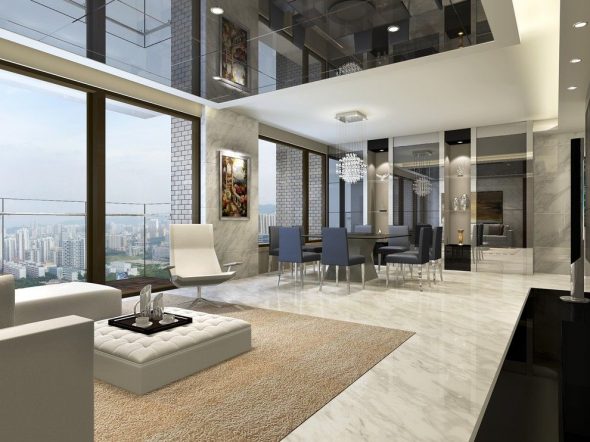
Mirror ceiling is a stylish solution for ceiling coverage.
So, what are the most common ideas for the design of the ceiling mirrors.
- A solid surface covering means filling the entire ceiling space with mirrors. This type of ceiling space is interesting for its peculiarity of the visual effect of the absence of sex. However, one has to take into account that such filling bears certain difficulties with its installation and maintenance. Cleaning such a ceiling will be somewhat more difficult than individual small tiles.
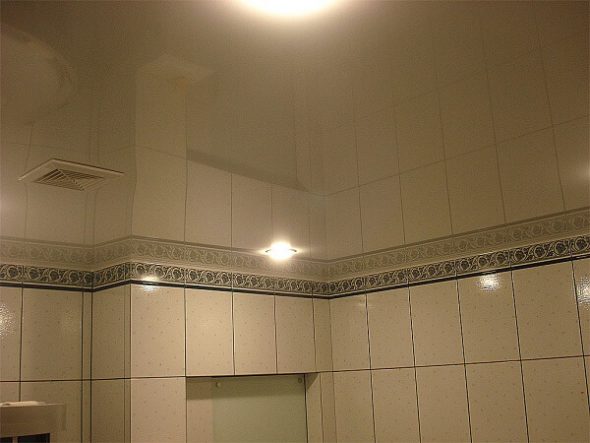
Solid mirror suspended ceiling in the bathroom
- The connecting frame is used to mask the coarse joints between the mirror plates. Here you can use any connection from profiles to ceiling beams. Thanks to such frames, an interesting mirror pattern will appear on the ceiling, individual and interesting.
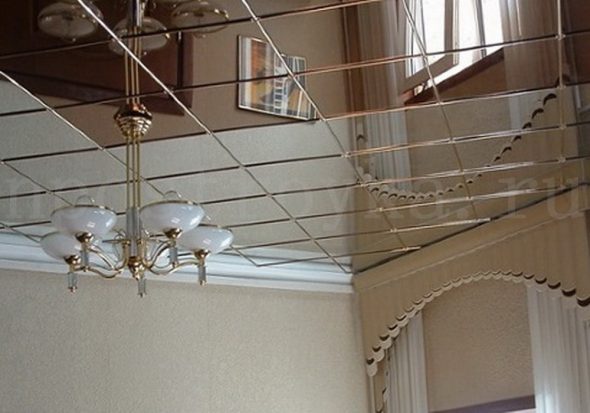
The design of the mirror surface consists of profiles, assembled in a durable frame and mirror panels in the role of facing material
- Combined types of ceiling coatings combine a mirror surface with other types of materials. Mirrors here can be used as a panel. They can move smoothly to the walls, which will create even more volume in the room. The effect of open space will appear and it will be difficult at first sight to determine the actual dimensions.
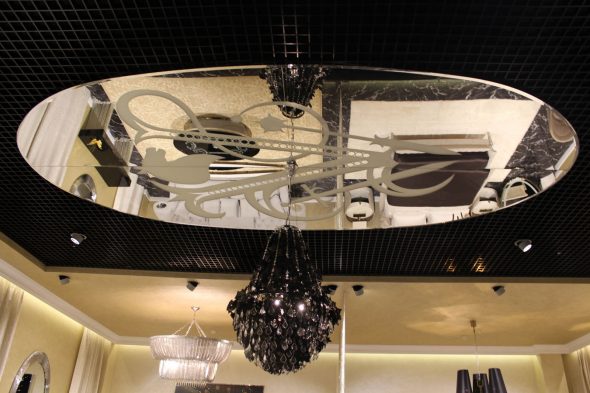
Combination of different coatings for the decoration of the ceiling with a mirror with a pattern in the center
- Decorative socket of mirrors on the ceiling as the most interesting solution for those who are afraid to make the whole ceiling a solid mirror. The light from the chandelier will play in such an outlet, creating a special atmosphere.
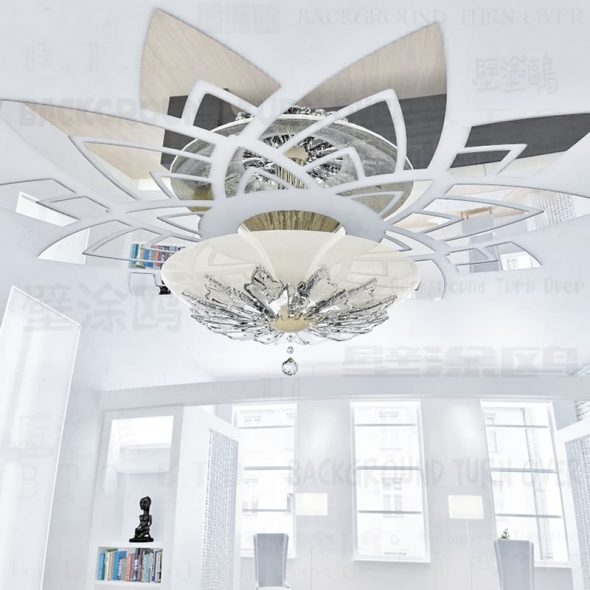
Decorative mirror insert in the form of a large flower on the ceiling
- Due to the different processing of the mirror surfaces of the panels, there are different types of decoration of the mirror panels by tinting or engraving. Mirror surfaces with a dusting or an engraving will open new opportunities in an interior.
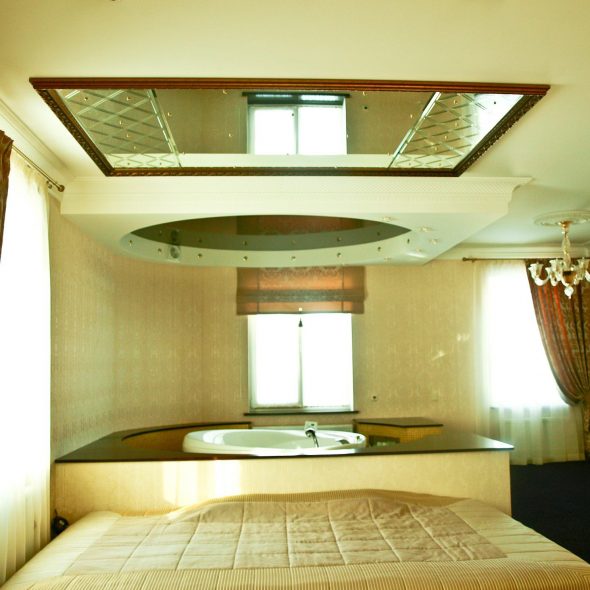
Diamond mirror on the ceiling
The advantages of mirror ceiling surfaces are many, because thanks to them the design of any room will sparkle in the truest sense of the word.
The main effect due to which mirror ceilings have become so popular is the visual increase in space. This is important in rooms with low ceilings or narrow and elongated areas.
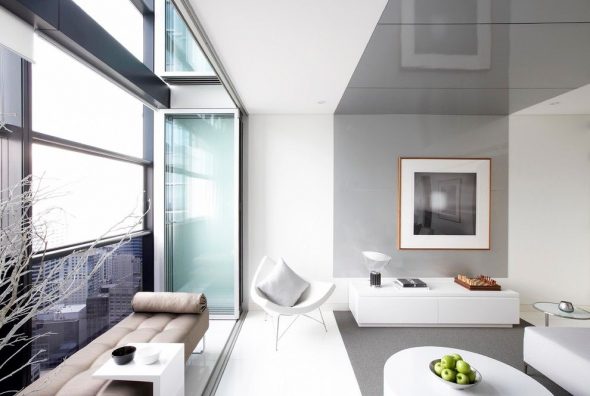
Mirror surfaces will help to visually enlarge a small room.
Mirrors have good sound insulation and do not require special care (you can take care of them with the same cleaning products as all other mirrors in the house). This is primarily a moisture-resistant material, and this quality allows the use of mirrored ceilings in rooms with high humidity. For example, in a bathroom, a mirrored ceiling will become a rather unusual and interesting solution. It allows you to create several levels of ceiling structures without any extra effort, and besides, its installation does not take much time.

Unusual bedroom with round mirrors on the ceiling
Content
Types of mirrored ceilings
Mirror ceilings differ in the type of the finishing material, in its shape and size, and in the type of attachment. The first type of fasteners often include:
- ordinary mirror coating, which is made on a glass base;
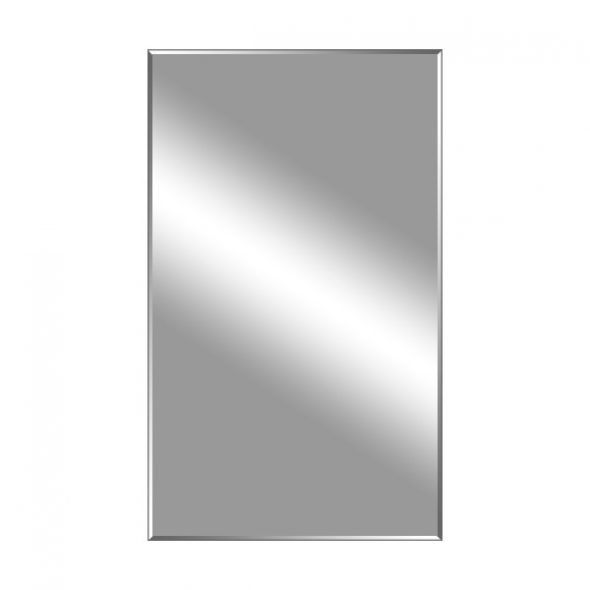
Mirror canvas on glass base
- Plexiglas or so-called polystyrene, on which a special mirror film is glued;
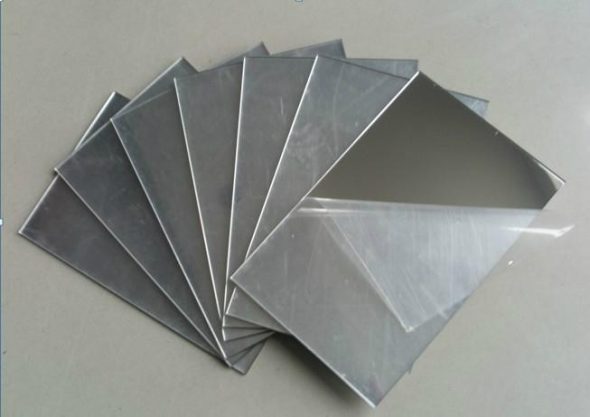
Extruded acrylic mirror plexiglass with special metallized film
- specialized canvas with glossy reflective surface;
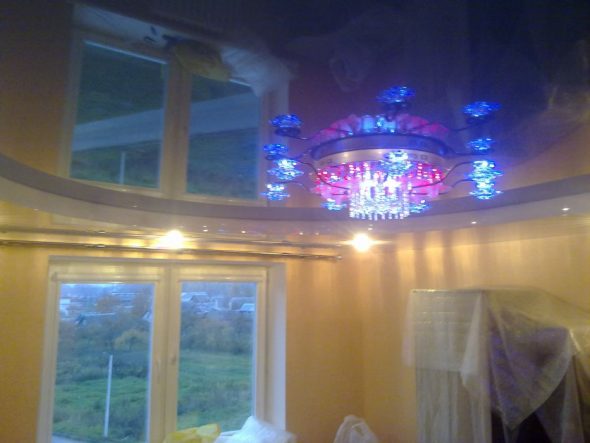
The glossy surface of the stretch ceiling has a mirror effect.
- aluminum sheets;
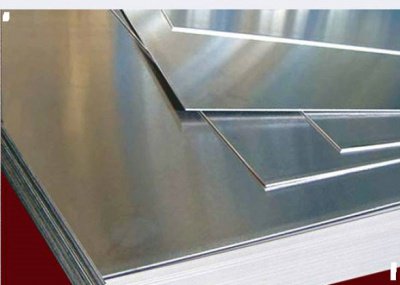
Aluminum sheet - durable and shatterproof option for ceiling decoration
- PVC film with a mirror surface.
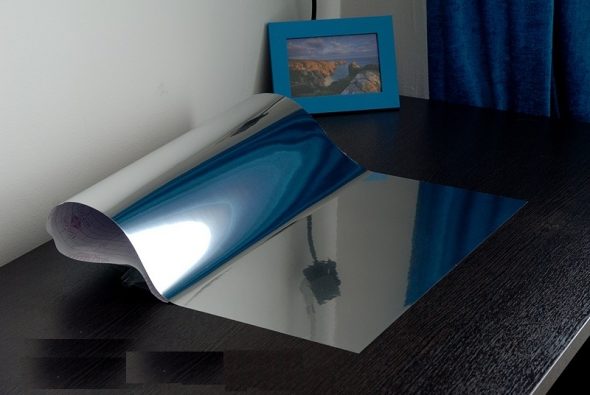
Mirror self-adhesive film - a great material for interior design
Mirror ceilings are divided in form into solid (they are typical for tension structures in which there are no joints), panel (all working material is presented in the form of rectangular panels, most often large sizes) and tiled (they belong to cassette mirror ceilings). And finally, the types of fasteners, which are the most important point in the installation of mirrored ceilings. There are three types of fasteners, the most common.
Hemming - all material is hemmed to the ceiling on a glue base.

Podshivny ceilings with mirror inserts are especially popular in the manufacture of their own hands
Suspended - a special framework is used here that is prepared in advance and is below the level of the main ceiling.

False mirror ceiling looks very attractive
Stretch - from the name of the type of attachment, it becomes clear how it is carried out, i.e. mirror cloth in a special way is stretched between the walls.
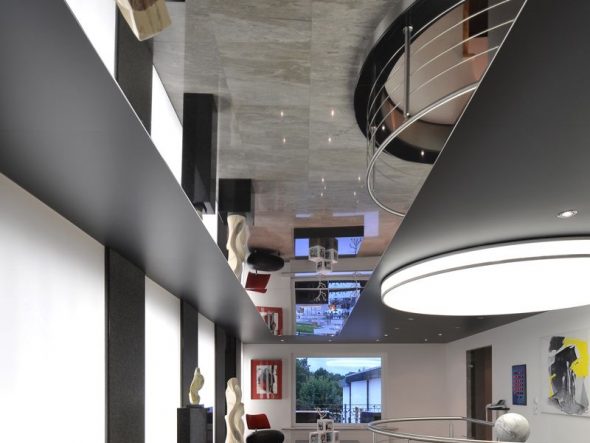
Stretch mirror ceiling in the design of a country house
Polystyrene mirror plates are on the market in the form of rolled material, which must be carefully straightened before work.

A small dining room with a ceiling of mirrored polystyrene plates
If time allows, it is enough to leave it unfolded for a couple of days. If not, then for a few hours you can put something heavy on top of the unfolded material. But such a straightening is considered not the best, so it is recommended to use it only in the most extreme cases. Its installation is the easiest, since its basis is made by a special self-adhesive film, due to which adhesion to the ceiling surface occurs. Much less common polystyrene plates without self-adhesive base, in which case adhesive mixtures based on PVA are used. The layer of glue is applied very thin, so as not to weigh down the structure.
Classic glass mirror ceilings
In order to make a mirror ceiling of classical materials, it is necessary to carefully select the shape and even color of the mirror panels, which will perfectly harmonize with the overall composition.It is important to do all the work carefully and carefully. After all, the appearance of the entire mirrored ceiling depends on it, and any inaccuracy in the work will be immediately noticeable.
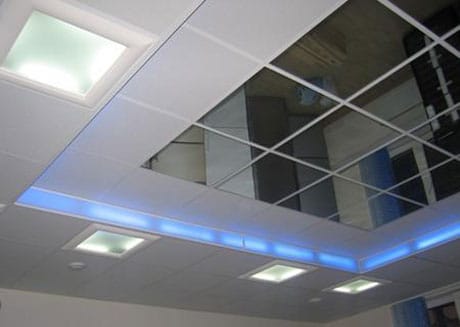
Multi-level ceiling with inset of mirror tiles
Cassette rack mirrored ceiling is an aluminum strip with a mirror-coated. There are a large number of color shades of such bands, and you can choose any “taste and color”.
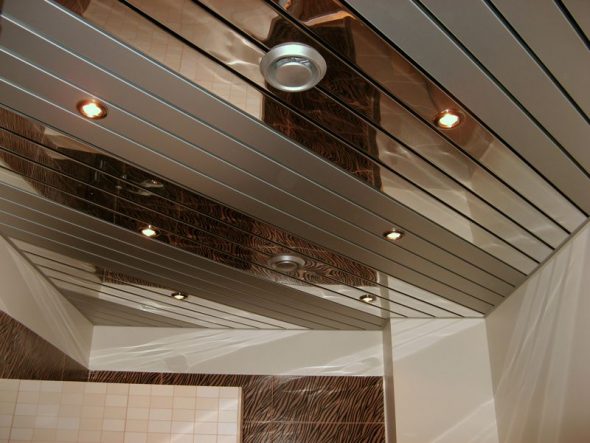
Mirrored slatted ceiling is easy to install and maintain, durable to use
There is a small trick, you need to pick up plates and slats of different shades, so that the mirrors stand out most favorably on the ceiling. Of course, in order for such a ceiling to serve as long as possible, you must follow certain installation rules. A gap of 3-5 mm between the wall and the end beam of the framework is imperative.
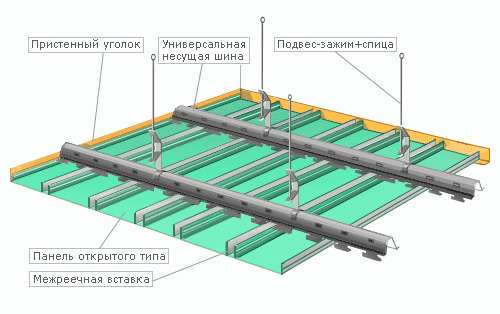
Rack type ceiling mounting scheme
In order to make a mirror ceiling with your own hands, you must first make a thorough calculation of the necessary material. Then a preliminary preparation of the ceiling is made, it is leveled, cleaned from the previous coatings.

Installing a frame for a mirrored ceiling
When attaching mirror coatings to the adhesive base, it must be remembered that it is absolutely impossible to remove your hands immediately after pressing the slab to the ceiling. The panel under its weight will come off, it must be supported for some time. For mounting on screws, you must use specialized rubber washers to help you keep the surface smooth and mirrored.
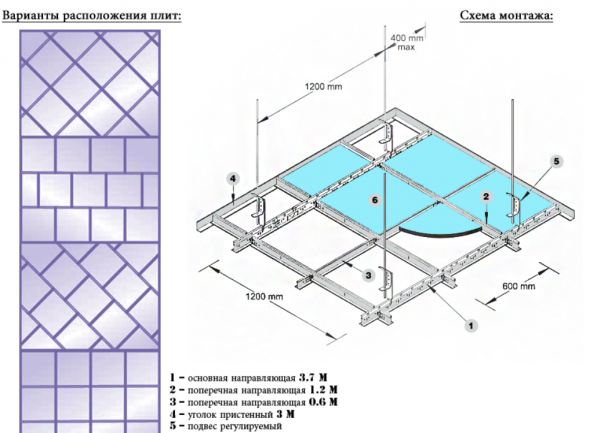
Mounting layout and layout options for suspended ceiling tiles
For cassette slatted ceilings, it is necessary to carefully calculate the place of attachment of metal profiles and ceiling lights. Most often in rooms with mirrored ceilings for lighting use raster fixtures.
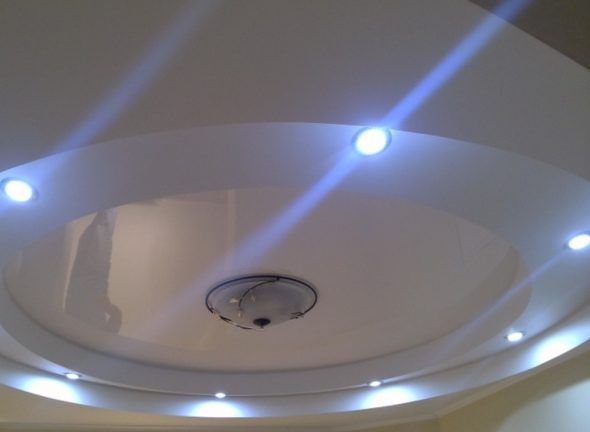
Installation of raster fixtures for the mirror ceiling
Thanks to them, the mirrors on the ceiling gain depth and, moreover, they are considered safe for any kind of premises. To connect to the mains, it is necessary to take into account possible problems with electrical wiring, including possible fire. To avoid them, you must use a special terminal block.
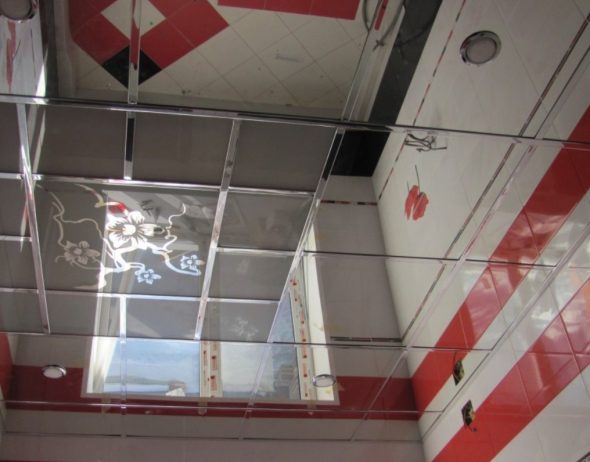
Fixing mirror plates on the ceiling
The growing popularity of stretch ceilings predetermined the creation of mirror stretch ceilings. For their manufacture use a special PVC film, it is extremely durable and at the same time thin. Glossy canvas come in different colors, so that they acquire different properties, from the maximum effect of the mirror to the diffuse reflection of the floor.
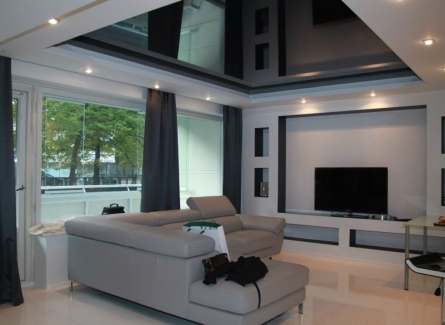
Stretch mirror cloth will look great in the premises for any purpose
Video: Ceiling mirror
Photo gallery of mirrored ceilings of various types in the interior:
 Closers for kitchen cabinets
Closers for kitchen cabinets
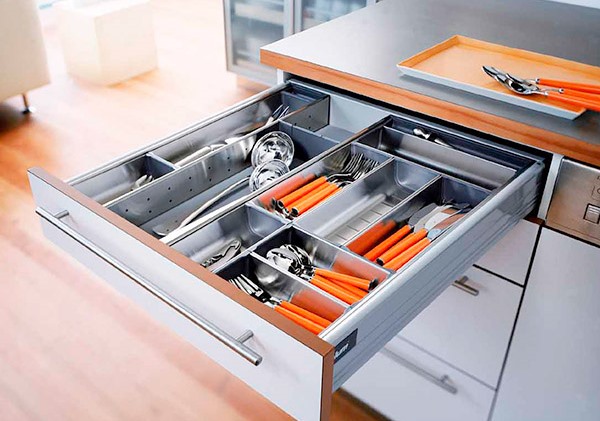 Guides for drawers. Types and features.
Guides for drawers. Types and features.
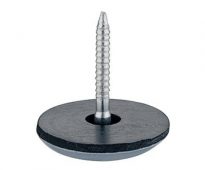 Furniture thrust bearing: what it is and how it works
Furniture thrust bearing: what it is and how it works
 We make shelves in the bath with your own hands
We make shelves in the bath with your own hands
